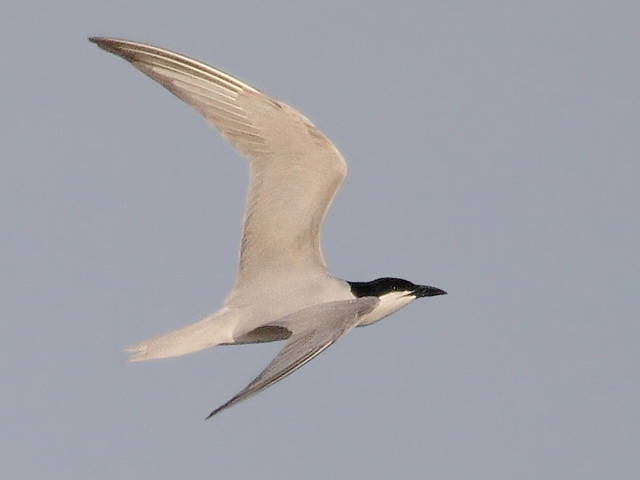
Breeds in southern part of Kazakhstan, in north to Zhanybek and Kamysh-Samar lakes in Volga-Ural interfluve, lower reaches of Ilek, Tengiz lake and Zaysan depression. Episodically nests in Naurzum Reserve. On dispersal and migration occurs everywhere, excepting the mountain areas.
Common breeding migrant. Inhabits the islands of Caspian Sea, the salty and fresh lakes and rivers with islands and located nearby the low-grassed lands, where Gull-billed Terns find the food. In spring arrives in small flocks in the end of March – April until May (in northern parts of breeding range). Breeds in dense colonies up to several hundred pairs, together with gulls, other terns and waders often. Nest is located in the shallow hole on the ground often without lining (sometimes there are only a few dry blades of grass), nests are built close one to another. Clutch of 2-3 eggs is produced in early May – early July. Both parents incubate for 22-23 days and care for juveniles which hatch in end April – August, and begin to fly at age 28-35 days old. Independent juveniles recorded from the end of June. The repeated nesting after loss of first clutch is not rare. Autumn migration is mostly in August, latest birds recorded in mid – end September.